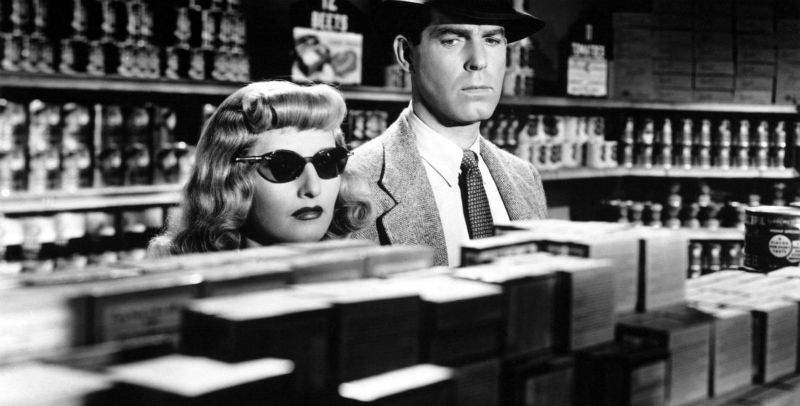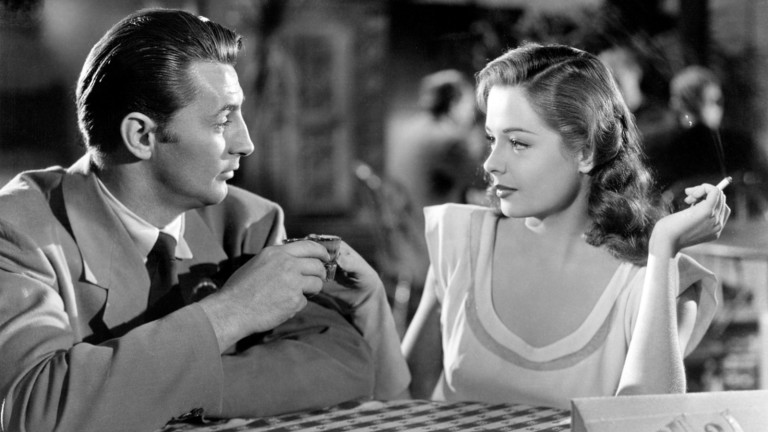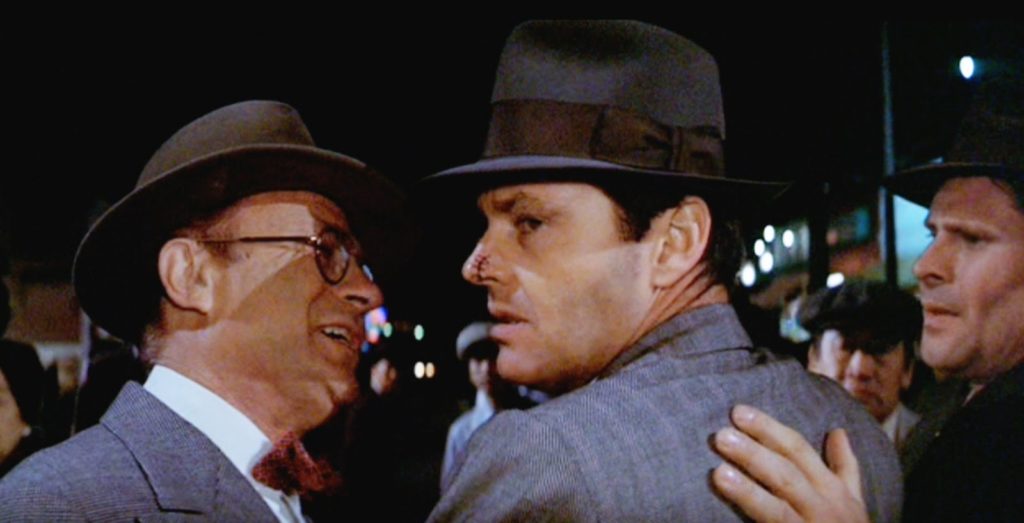I saw my first film noir at the historic Castro Theatre in San Francisco. As the audience entered the ornate auditorium, an organist serenaded us with a menacing, maniacal tune. The atmosphere was jovial—it was the Noir City Film Festival, and the theatre was packed with genre aficionados, many decked out in fedoras. I expected the film to be like the entire evening: fun, kitschy, retro. Instead, I found myself completely absorbed in the story of, as Laura Lippman would say, “dreamers who become schemers”: characters driven by loneliness, anger, sex, greed, ambition. I walked out a noir fanatic, and devoured all the classics I could get my hands on, from the revered (The Big Sleep, Double Indemnity, Sunset Boulevard) to the weird (D.O.A., Gaslight, Gun Crazy).
At the time, I was in grad school, writing mostly traditional literary fiction, and trying to figure out what kind of writer I was, exactly. It was summer in San Francisco, which is to say, it was gloomy and cold, and I had plenty of time on my hands. I decided to write a noir novel, just for fun. As I dreamed up ways to play with genre tropes, it occurred to me how much classic noir continues to influence crime fiction. Though we’ve swapped cigarettes for vapes and gabardine suits for yoga pants, noir tropes appear with regularity in modern novels. Back in the golden age of film noir, they reflected the culture’s deepest subterranean fears and desires; today, crime and thriller writers use them to reflect our own. Here are five:

1. The Private Eye
“Down these mean streets a man must go who is not himself mean, who is neither tarnished nor afraid,” goes Raymond Chandler’s definitive description of the hardboiled private eye.
The private eye perspective is at the heart of many classic noir films. Typically, he’s a straight-shooting figure whose quest to solve the mystery leads him into a shadowy world in which criminals and the clients can blur. Often, his determination to solve the mystery is a matter of obstinacy, as clients, criminals, and cops alike beg him to butt out. In the end, the private eye’s personal moral compass guides the final judgment. Raymond Chandler’s Marlowe, as played by Humphrey Bogart, is probably my favorite; though it’s Dashiell Hammett’s Sam Spade who really exemplifies the way private eyes consider their take on justice to be the final word. Though Spade is far from a good guy himself—in The Maltese Falcon, he sleeps with his partner’s wife, for one—his moral code is nevertheless supreme. “When a man’s partner’s killed,” he intones to a weeping Miss Wonderly, “he’s supposed to do something about it.”
Obviously, the private detective remains a common figure in crime fiction; I want to discuss two authors who modernize the trope in interesting ways. First up, Kate Atkinson’s Jackson Brodie, the private detective hero of her crime quintet, which begins with Case Histories. Brodie hews close to Chandler’s ideal hero: he ventures into mean streets, abides by his own moral code, and can’t let go of a mystery once he’s on the case. However, Atkinson plays with the assumption of the private eye’s centrality and moral authority. Brodie may solve the mystery at the heart of the book (or he may not), but he himself isn’t at the heart. Other characters—especially those living in the aftermath of violent crimes—dominate the narrative. It matters little whether Jackson Brodie’s moral compass is satisfied at the end.
In Ben H. Winters’s pre-apocalypse trilogy, which begins with The Last Policeman, the private eye’s moral compass faces the ultimate existential test: does justice matter when the world is on the brink of annihilation? The premise: an asteroid will hit earth in six months, wiping out all life, and Detective Hank Palace begins to investigate a suspicious suicide. The question of whodunit is offset by the broader question of…does it matter?
While the classic noir private eye might feel at home in a modern crime novel, he’d have to accept that the final word in justice is out of his hands.

2. The Femme Fatale and the Dangers of Female Desire
In the femme fatale, classic noir films portrayed the frightening power of women’s desire—for sex, money, or escape from the constraints of their lives. While the men who encounter the femme fatale might share her lust for love or money, he’s more likely to be capable of redemption; his downfall is tragic because he might have gone another way.
Perhaps the ultimate femme fatale is Double Indemnity’s Phyllis Dietrichson, the anklet-flashing housewife who, after a couple glasses of iced tea, persuades insurance agent Walter Neff to kill her husband. The murder goes smoothly, but the scheme spoils their nascent relationship. Turns out, wicked Phyllis doesn’t intend to share her money, or her life, with Walter. “I’ve always been bad,” she admits, as they face off over a loaded gun. Falling for Phyllis was Walter’s downfall—a common fate for the hapless fellow ensnared by a femme fatale.
In modern crime, authors interrogate the concept of the pure evil femme fatale with a closer eye. In Laura Lippman’s homage to Double Indemnity, Sunburn, Polly cunningly manipulates the man her husband hired to find her—bringing about the downfall of both men. Unlike wicked Phyllis, though, Polly’s motivations are arguably good—and she feels at least a little badly at the way things shake out.
A more selfish femme fatale stars in To Die For, Joyce Maynard’s prophetic 1992 novel about Suzanne Maretto, an ambitious young woman whose lifelong dream is to be on television. When her career path stagnates, she blames her plodding husband, eventually running into the arms of a much younger lover. Things don’t end well for the men—or for Suzanne, whose slide from desire to delusion recalls Sunset Boulevard’s Norma Desmond. Turns out, even this day in age, desire can be deadly.

3. Characters Haunted by the Past
It’s tough to change a man, especially when he’s trying to outrun his past. In the noir classic Out of the Past, Jeff Bailey has found peace in a quiet town, running a gas station and wooing a local girl…until an old acquaintance shows up with a flat tire, and Bailey is sucked back into his former life—caught between the toxic, intoxicating woman who betrayed him, and the hard-smoking gangster he betrayed for her sake. Spoiler alert: he never does get that happy ending with the small-town girl.
Scores of modern crime novels feature characters whose pasts are heavier than dead men—it’s almost a requisite for a protagonist to have demons, from Gillian Flynn’s Sharp Objects heroine Camille Preaker to the laconic Aaron Falk of Jane Harper’s The Dry. Lou Berney’s November Road, however, is particularly reminiscent of classic noir. After learning more than he’d like to about the assassination of JFK, Frank Guidry finds himself turned from top dog to hunted fox as he flees from the mob. On the run, he encounters Charlotte Roy, and—cutting to the chase—sees in her the possibility of not only a better life but a better self. His past, however, is never far behind, as a hit man tails him down the highway. The fatalistic finale is pure noir that’ll break your heart. Revenge may be possible in noir, but redemption is rare.

4. Claustrophobia, Paranoia, and a Faltering Grasp on Reality
When the term “gaslight” became widely used a few years ago, I was surprised that the strange, claustrophobic noir Gaslight carried such cultural currency. (The movie was based on a play.) In the film, newlywed Paula is driven to the edge of reason as her husband isolates and manipulates her. Ingrid Bergman’s dizzying, throat-clutching performance is almost impossible to witness without feeling a bit mad yourself. Paula is far from the only woman in noir who’s nearly driven insane. In The Blue Gardenia, Norah Larkin wards off a potential date rapist with a fireplace poker; the next morning, she learns that he’s been murdered. The potent cocktails she drank blurred her memory, but it’s the vicious talk of reporters, police, and even her roommates—only a slut would go out with such a man, she must be a bad girl, etc.—that drives Norah into increasingly wild paranoia and doubt.
Alcoholic fugues, a faltering grasp on reality, and characters hounded into paranoia continue to carry a fascination for modern crime writers. In Paula Hawkins’s blockbuster The Girl on the Train, Rachel Watson is such a heavy drinker she can’t remember her own actions, not only today but yesterday, and the weeks before—and her husband is maliciously using this weakness against her. Similarly, in The Woman in the Window, Anna Fox’s heavy drinking and pill popping renders her report of a murder unbelievable to the police, and the murderer toys with her doubt until she wonders at her own sanity. In noir, the boundary between an ordinary citizen and a murderer is surprisingly permeable; that between a solid grasp on reality and absolute disorientation is even thinner.

5. Disillusion, Pessimism, and the Unhappy Ending
For me, noir is set apart from other crime and suspense by its pessimistic outlook. Unlike some mysteries, in which the solution of a crime restores order and justice, the noir ending is bleak, leaving the distinction between right and wrong uncomfortably blurred.
In my favorite noir, Chinatown, Jake Gittes solves the mystery at the heart of the film, but that doesn’t result in justice. The villain evades punishment, even defending his actions as furthering the march of progress. (“The future, Mr. Gittes!” he blusters.) Worse, Jake’s attempt to help Evelyn Mulwray lead her straight into danger. As Jake limps away from the wreckage of his good intentions, his partners offer this cold comfort: “Forget it, Jake. It’s Chinatown.” That’s life.
Many of today’s crime novels also deny readers the comfort of a tidy ending. Gillian Flynn’s genre-defining Gone Girl actually takes the quintessential happy ending—marriage and a baby on the way—and turns it into a dark, terrifying prospect. In Tana French’s The Witch Elm, the line between good and bad is blurred to near oblivion. The narrator, whose defining character trait was always his mindless good fortune, begins his story the night his lucky streak comes to an end. A robbery gone wrong lands him in the hospital with brain damage and debilitating PTSD. Things go downhill from there. Through the book, guilt and innocence are far from straightforward, and depend on who is telling their version of the story, and the line between victim and suspect is practically nonexistent. It’s a dark view that would be right at home rendered in black and white, with the narrator sharing his bewildered narrative in the aftermath of an ordinary life gone violent.
***
Feeling uplifted? Probably not. Noir has always, as David A. Cook put it, served as “a dark mirror” held up to society, and gives storytellers old and new an expression for the darkness that lies just beneath the surface of everyday life.

















